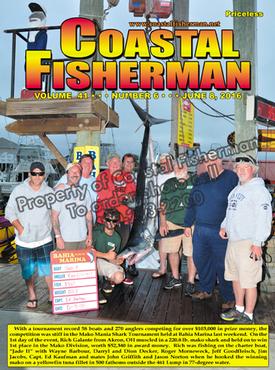


Article by Capt. Steve Katz
 LED lighting -
LED lighting -
A bright idea?
LED lighting has come a long way since its invention in 1962. In the last few years, the cost has come down, the brightness has gone up and the sizes, shapes and applications have dramatically increased. Whether it’s lowering energy consumption, reducing heat or providing light in areas with limited resources, LED lighting has much to offer us all.
When it comes to boating, there is no shortage of manufacturers and retailers offering LED lighting solutions. Marine LED lighting upgrades and new boat builds often include navigation, courtesy, task, security and underwater LED lights.
If you are upgrading your navigational lighting to LED’s, there are a few legal requirements that may determine your product selection. For reference, the requirements for all navigation lights aboard vessels are prescribed in Rules 20, 21, 22 and Annex I of the “Rules of the Road”. There are many choices for LED navigation lights and you will need to be sure they meet the requirement for your vessel. Use of any light source that does not provide the proper chromaticity, luminous intensity or cut-off angles could result in non-compliance.
When selecting new LED navigation lights, there are two general options. You can use the existing light fixture and replace the incandescent bulb with a LED bulb or you can replace the fixture with a new LED fixture that includes embedded LED light source. It is generally a better idea to replace the fixture. New LED navigation lights are often completely sealed, therefore eliminating the troublesome connections to the bulb and have a lens designed to focus the LED’s in the proper direction and intensity. It seems the claimed 50,000 hours of life isn’t realistic in my experience, but LED fixtures are often brighter and last much longer than traditional navigation lights.
When underwater lights became popular, there were many different light sources such as halogen, HID and xenon Some were not so bright and some were extremely expensive. Now, all underwater light manufacturers offer LED lights in single and multiple colors that are generally brighter and less expensive than incandescent lights. LED’s have also made it possible to design a low profile light that can be surface mounted on the boat’s hull with only a small hole for the wire, about 1/2-inch, as compared to flush mount lights that can require a hole as large as 3-inches.
Interior LED lights include specially designed LED fixtures available in many styles. Replacing the incandescent bulbs in the existing fixtures with a LED bulb can also be a good cost effective idea. I recommend starting with a few fixtures and trying different retrofit LED bulbs and fixtures since there can be drastic color, quality and intensity variations. Bulb retrofits may not match the look of an engineered LED fixture but you will still benefit from the LED’s features such as; less power consumption, less heat output and longer life.
The most common troubleshooting issues seem to be the power supply to the light. On a recent service call to investigate why all three newly installed underwater light were not operating, I found the power supply fuse was blown. That seems easy to fix, but upon further investigation the new LED underwater lights draw a maximum of 7.5 amps each.
With three lights, that’s 22.5 amps. The customer needed more than a bigger fuse; they needed larger size wiring to carry the proper voltage from the source of power to the lights. It turns out the installer re-used the existing wire and fuse for the new lights without checking the power requirements.
The newest LED lights are very powerful and often use as much or more power as the incandescent lights they replace, often requiring wiring upgrades. As an example, the traditional 4”x 6” 12v halogen spreader light draws 4 amps at 12 volts and the slightly larger Lumitec h120 LED flood light requires 10 amps at 12 volts. Add a few of these on the hardtop and some re-wiring is probably necessary.
LED lights are inherently polarity (positive and negative) sensitive. LED’s are a diode and only allow electricity to flow in one direction although some LED bulbs have circuitry to allow proper operation with either polarity. If your new LED light does not illuminate out of the package, check to see if the negative and positive power wires at the light are accidentally reversed.
Interior or exterior, bright white or color changing, LED lighting has become a great way to upgrade your boats looks and function, while using less electricity, generating less heat and reducing maintenance.
Captain Steve Katz is the owner of Steve’s Marine Service and holds NMEA, AMEI and NMEA2000 certificates along with ABYC Master Technician certification and factory training from many manufacturers.